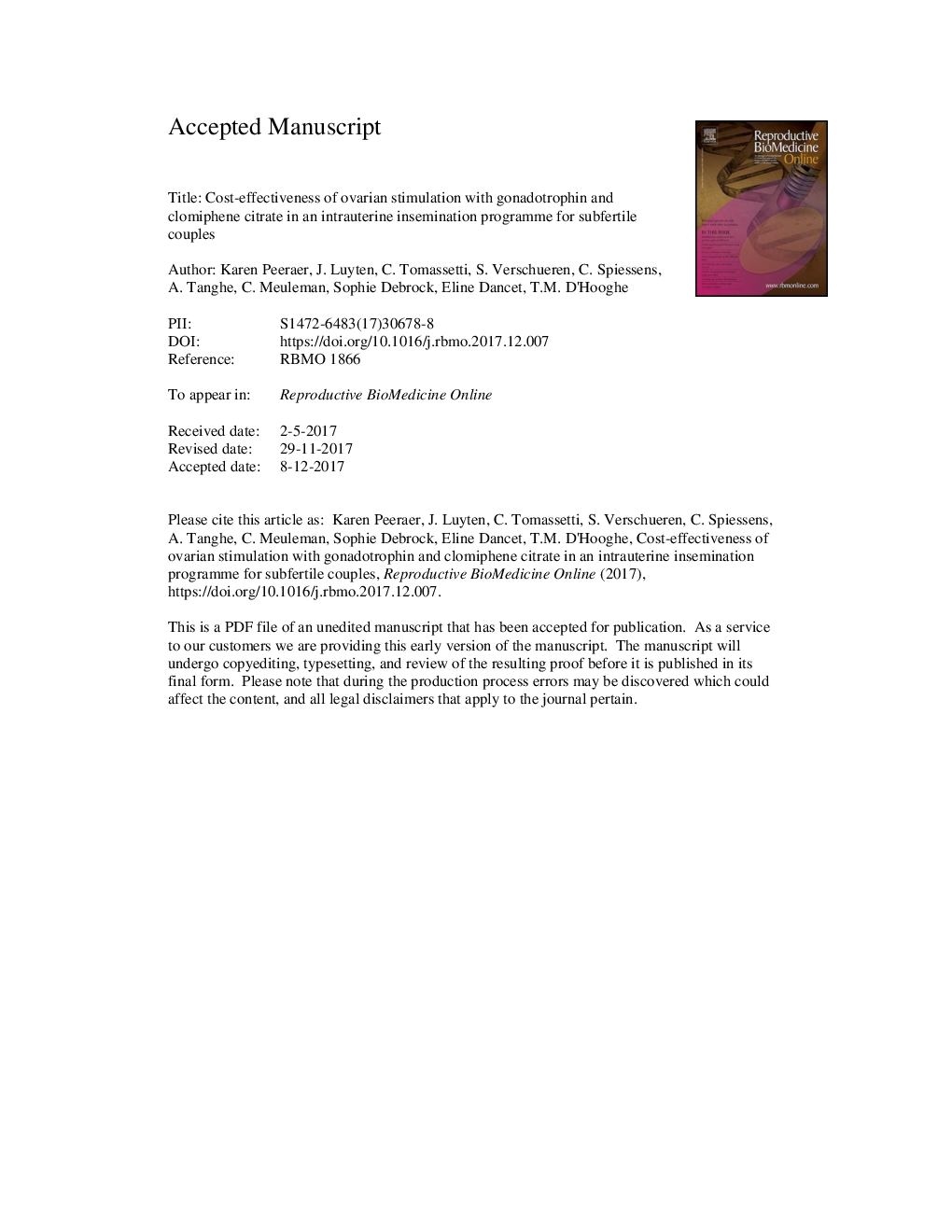| Article ID | Journal | Published Year | Pages | File Type |
|---|---|---|---|---|
| 8783905 | Reproductive BioMedicine Online | 2018 | 29 Pages |
Abstract
Ovarian stimulation with low-dose human menopausal gonadotrophin (HMG) is superior to clomiphene citrate in intrauterine insemination (IUI) cycles with respect to clinical pregnancy rate, but it is unclear whether HMG is also the more cost-effective option. The aim of this study was to compare the cost-effectiveness of ovarian stimulation with low-dose subcutaneously administred HMG (37.5-75âIU per day) to orally administred clomiphene citrate (50âmg/day from day 3-7) in an IUI programme for subfertile couples. A cost-effectiveness analysis was conducted using the results of a randomized trial, including 620 IUI cycles. The primary outcome was the incremental cost-effectiveness ratio (ICER) of using HMG versus clomiphene citrate. Results are presented from the healthcare payer perspective. The total cost per patient associated with one IUI treatment with HMG is â¬764, whereas it is â¬558 if clomiphene citrate is used, resulting in an incremental cost of â¬206 for HMG per treatment. The incremental clinical pregnancy rate of using HMG instead of clomiphene citrate, however, is also 5.7 percentage points higher, resulting in an ICER of HMG versus clomiphene citrate of â¬3615 per additional clinical pregnancy achieved. On average, HMG was found to be more cost-effective than clomiphene citrate.
Related Topics
Health Sciences
Medicine and Dentistry
Obstetrics, Gynecology and Women's Health
Authors
Karen Peeraer, Jeroen Luyten, Carla Tomassetti, Sarah Verschueren, Carl Spiessens, Ann Tanghe, Christel Meuleman, Sophie Debrock, Eline Dancet, Thomas D'Hooghe,
